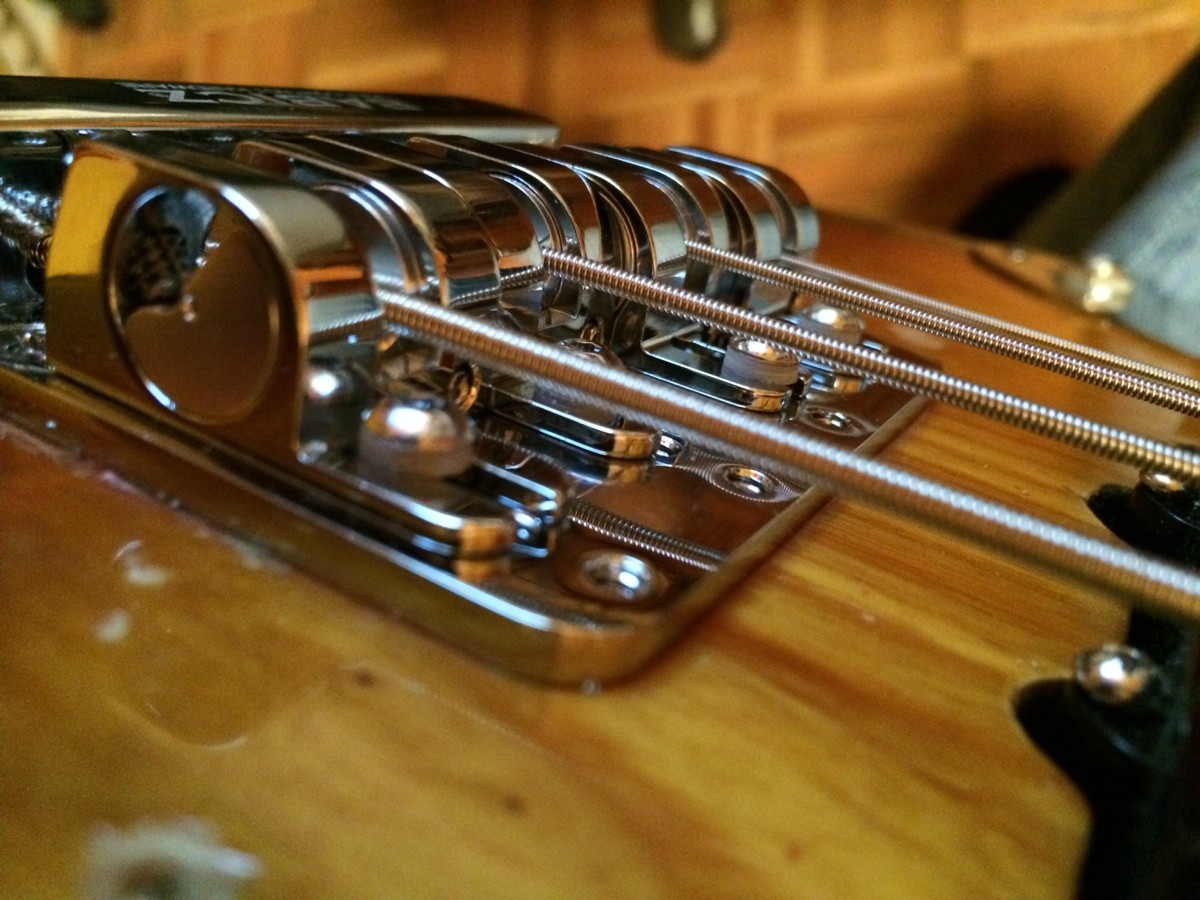Some of you read my bellyaching about my E string saddle on my '78 Jazz being possessed by gremlins in this thread:
viewtopic.php?f=15&t=5241I just got finished installing the Babicz bridge I bought last week and I'm pretty impressed with it. It's a high mass bridge with locking saddles, preventing movement that would screw up saddle height as well as intonation.
I really didn't want to go this route mainly out of vanity, because I thought it would look ridiculous.
But I didn't want to use polish or loctite to keep my Fender saddles stable. I just wanted to set the damn thing and forget about it. This should do the trick.
Anyway, without measuring, I'd say the bridge has a footprint and weight that's similar to a Badass II, but with a little higher profile. It's extremely solid and well made. The saddles all make full contact (hence the name of course) with each other and with the bridge plate for maximum transfer of sound, sustain, etc.
This particular bass never had any issues with sustain and has always sounded great, but tonally I do notice an added treble zing that sounds really good.
Installation was of course more tedious than your average Fender bent bridge. You have to remove everything from the bridge plate in order to bolt it to the body. This is a drop in, 5 hole mounting pattern for Fender basses ,so no mods required. However, the mounting screws' threads are a tiny bit more stout than the ones on the Fender bridge, so that's something to consider if you're retrofitting and have commitment issues.
Once the bridge was roughed in, adjustment was smooth as silk. No shimming, no rigging anything to make the bridge work as it should. This was a concern for me because this bass had a BAII on it when I bought it and the neck was shimmed to make that hunk of shit work. And the bass was unplayable with the BAII, as has almost always been the case in my experiences with those awful metalli-turd contraptions. (My hatred for Leo Quan bridges is borderline unhealthy, and I actually hurt for those who use them

)
Here are a few pix.

Here you can see the allen screws that lock the saddles down once you set intonation.

Check out the set screws on the back of the saddles. The one on the right side adjusts string height, and the one on the left locks the saddle to prevent up/down movement.

This one shows the cams that adjust string height.









